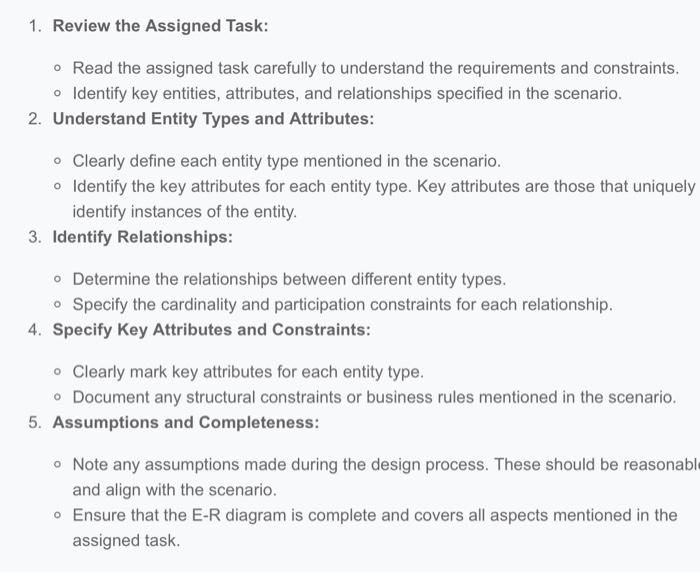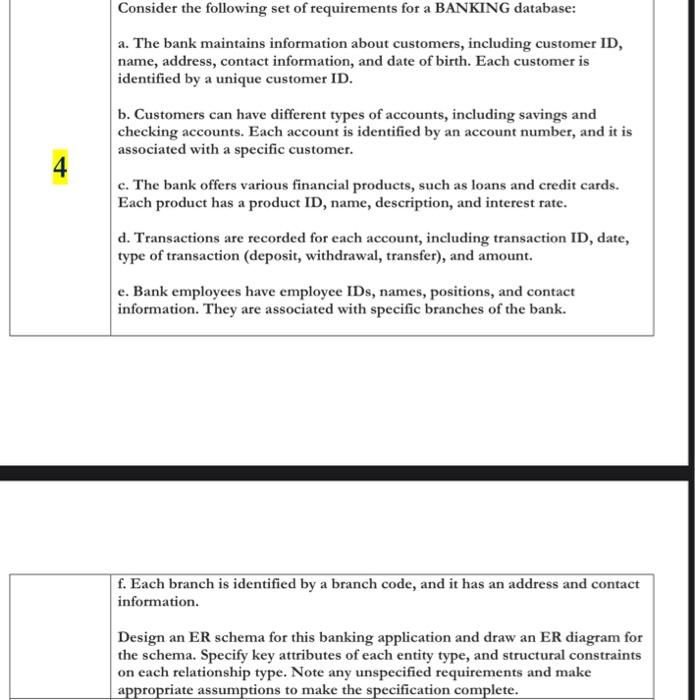

1. Review the Assigned Task: - Read the assigned task carefully to understand the requirements and constraints. - Identify key entities, attributes, and relationships specified in the scenario. 2. Understand Entity Types and Attributes: - Clearly define each entity type mentioned in the scenario. - Identify the key attributes for each entity type. Key attributes are those that uniquely identify instances of the entity. 3. Identify Relationships: - Determine the relationships between different entity types. - Specify the cardinality and participation constraints for each relationship. 4. Specify Key Attributes and Constraints: - Clearly mark key attributes for each entity type. - Document any structural constraints or business rules mentioned in the scenario. 5. Assumptions and Completeness: - Note any assumptions made during the design process. These should be reasonabl and align with the scenario. - Ensure that the E-R diagram is complete and covers all aspects mentioned in the assigned task. Consider the following set of requirements for a BANKING database: a. The bank maintains information about customers, including customer ID, name, address, contact information, and date of birth. Each customer is identified by a unique customer ID. b. Customers can have different types of accounts, including savings and checking accounts. Each account is identified by an account number, and it is associated with a specific customer. c. The bank offers various financial products, such as loans and credit cards. Each product has a product ID, name, description, and interest rate. d. Transactions are recorded for each account, including transaction ID, date, type of transaction (deposit, withdrawal, transfer), and amount. e. Bank employees have employee IDs, names, positions, and contact information. They are associated with specific branches of the bank. f. Each branch is identified by a branch code, and it has an address and contact information. Design an ER schema for this banking application and draw an ER diagram for the schema. Specify key attributes of each entity type, and structural constraints on each relationship type. Note any unspecified requirements and make appropriate assumptions to make the specification complete








